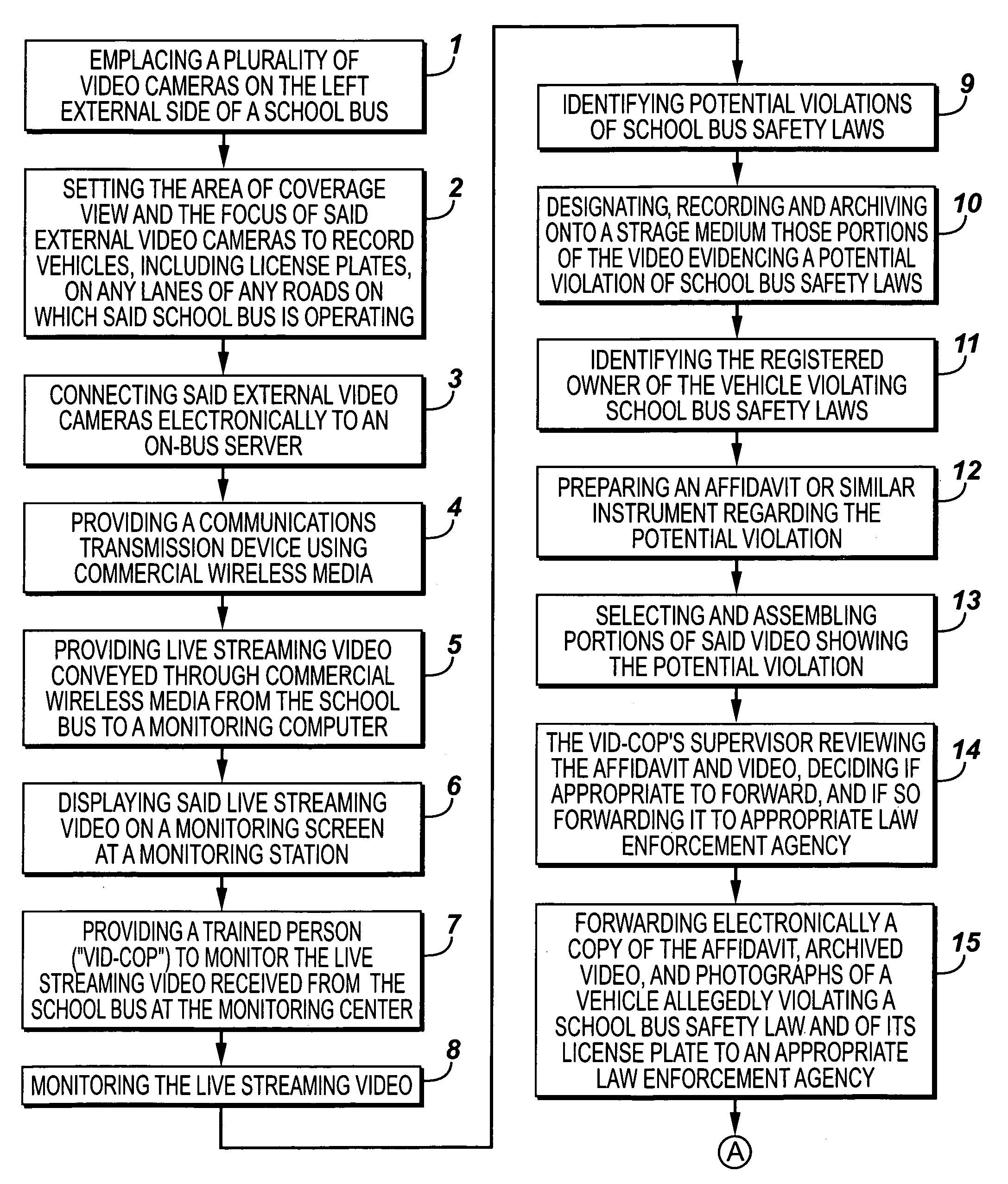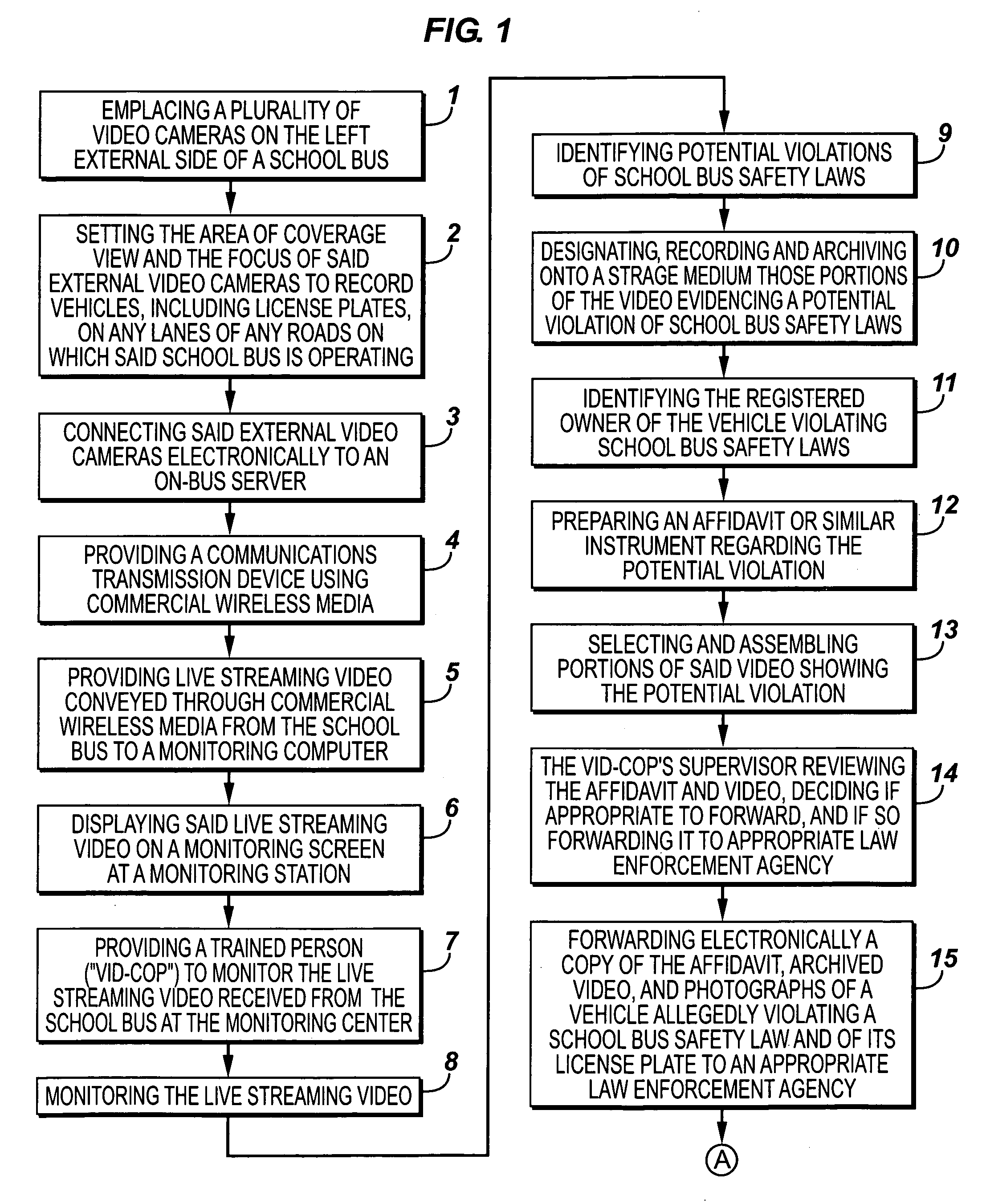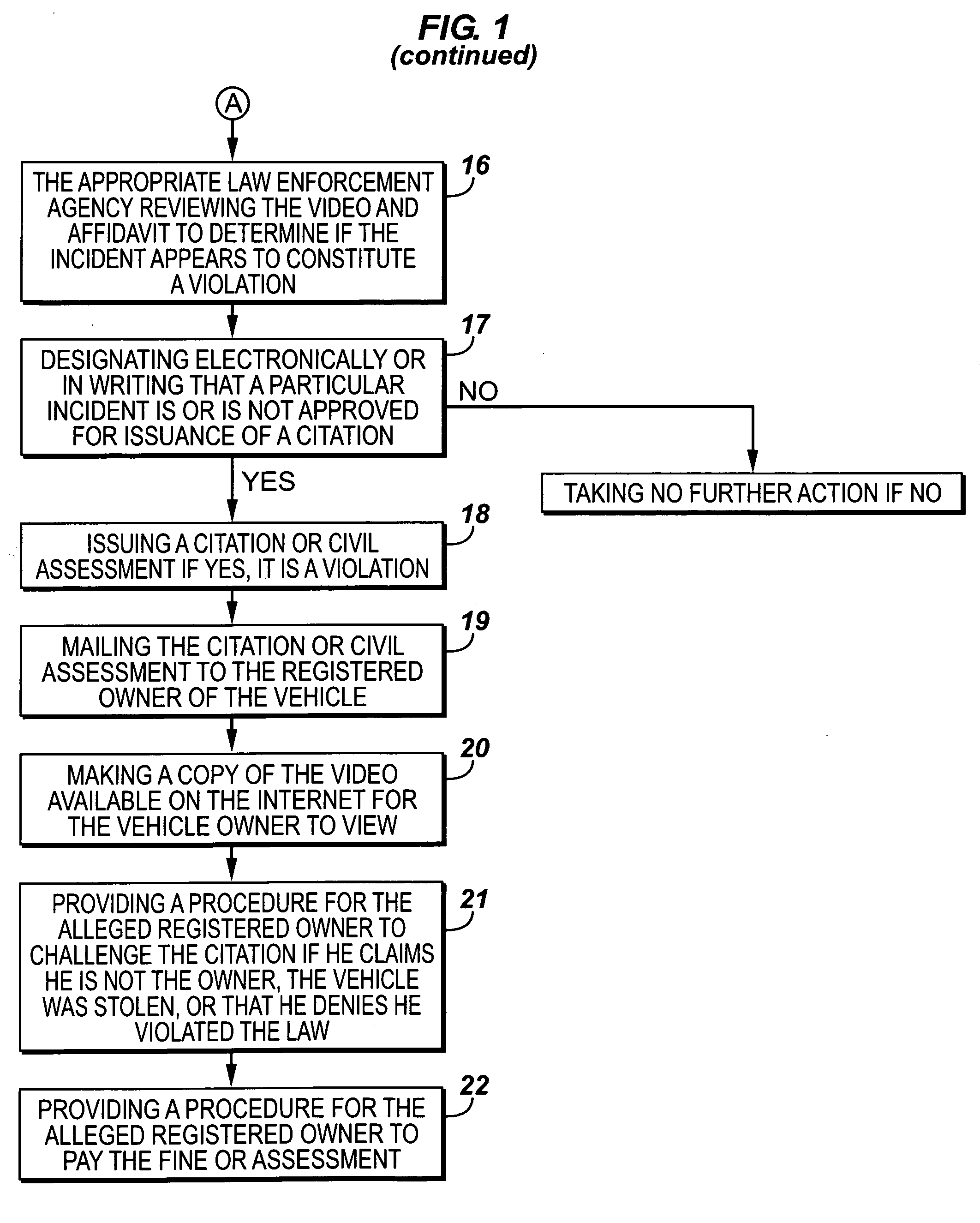Method of providing safety enforcement for school buses
a technology for school buses and enforcement methods, applied in the field of providing safety enforcement for school buses, can solve the problems of school children at substantial risk of being injured and/or killed by motorists, carrying substantial penalties, and drivers of motor vehicles and motorcycles often ignore and violate said laws
- Summary
- Abstract
- Description
- Claims
- Application Information
AI Technical Summary
Benefits of technology
Problems solved by technology
Method used
Image
Examples
Embodiment Construction
)
[0027]The method is specifically designed to be conducted by either a private contracting company or by a law enforcement agency. The preferred embodiment is that it will be operated by a private contractor. Such a private contractor company will be referred to hereinafter as the “third party administrator”.
[0028]A plurality of video cameras are mounted on the left external side of a school bus 1 at any point from about one-fifth of the distance from the front of said school bus to the end of said school bus. In a preferred embodiment, five video cameras are mounted 37 on the left external side of said school bus approximately one-fifth of the distance from the front of said school bus approximately under the school bus driver's and first passenger's windows. The video cameras will hereinafter be referred to as the “external video cameras.” The mounting environmentally seals said external video cameras so that they are protected from the weather elements.
[0029]The field of coverage...
PUM
 Login to View More
Login to View More Abstract
Description
Claims
Application Information
 Login to View More
Login to View More - R&D
- Intellectual Property
- Life Sciences
- Materials
- Tech Scout
- Unparalleled Data Quality
- Higher Quality Content
- 60% Fewer Hallucinations
Browse by: Latest US Patents, China's latest patents, Technical Efficacy Thesaurus, Application Domain, Technology Topic, Popular Technical Reports.
© 2025 PatSnap. All rights reserved.Legal|Privacy policy|Modern Slavery Act Transparency Statement|Sitemap|About US| Contact US: help@patsnap.com



